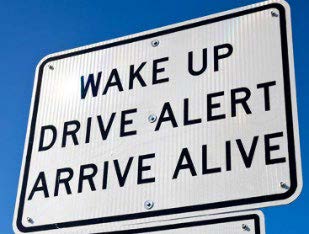
Daylight savings time, which begins this weekend, brings an increased risk of drowsy driving.
Drowsy Driving Facts:
TIME
- Drowsy driving accidents often occur late at night or early in the morning
- Slipiness can peak in the afternoon, especially affecting older adults
SPEED
- Severe drowsy driving accidents occur at high speeds on highways
- Accidents can also occur at slower speeds
BEHAVIOR
- Drowsy drivers often make no effort to brake or avoid an accident
Drowsiness:
- Makes drivers less able to pay attention
- Slows reaction time
- Affects the ability to make good decisions


Drowsy Driving: Warning Signs
- Yawning
- Can’t keep eyes open
- Nodding off; trouble keeping head up
- Can’t remember driving the last few miles
- Ending up too close to nearby vehicles
- Missing road signs, turns, or exits
- Drifting into other lanes or onto rumble strips on the shoulder
Drowsy Driving: Prevention
To prevent drowsy driving, the CDC recommends:
- Getting enough sleep; at least seven hours per night
- Developing good sleeping habits, e.g., sticking to a sleep schedule
- Talking to a doctor if you have, or suspect you may have a sleep disorder
- Avoiding drinking alcohol or taking medications that may cause drowsiness

